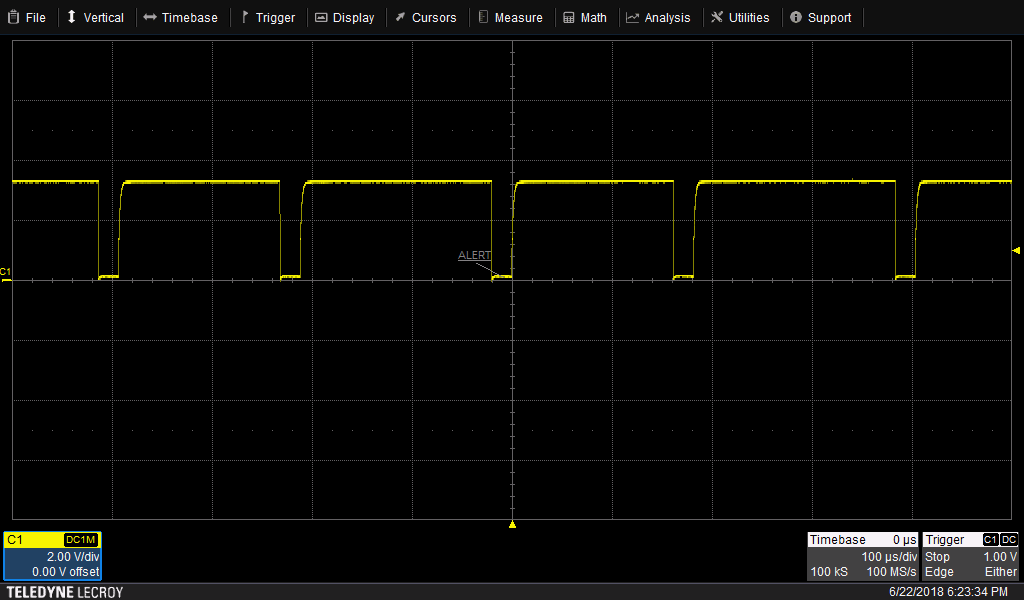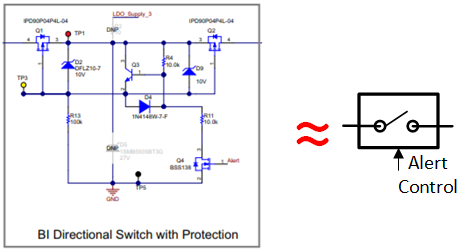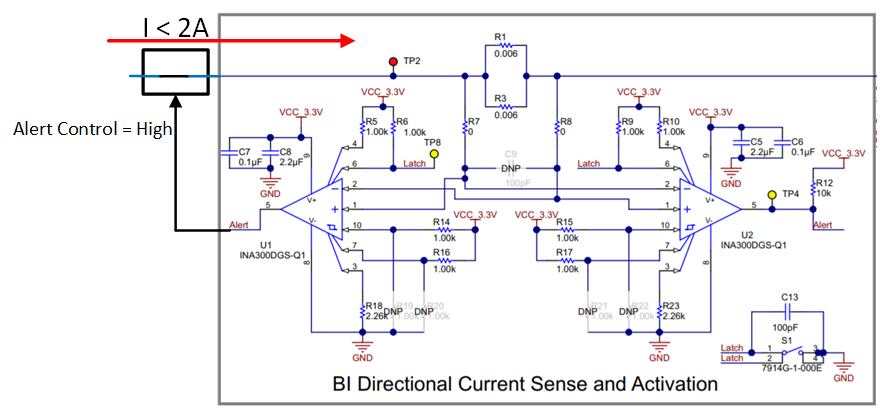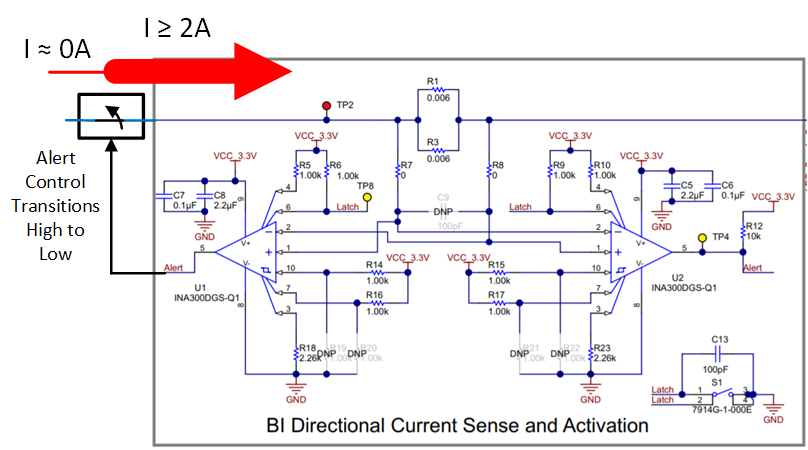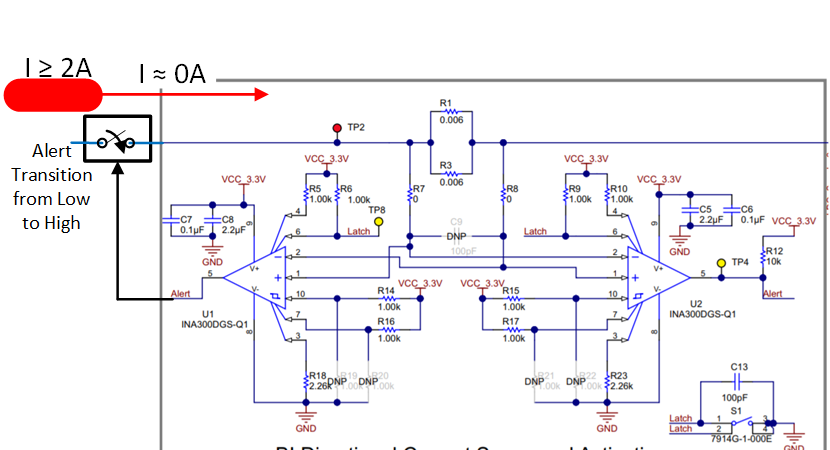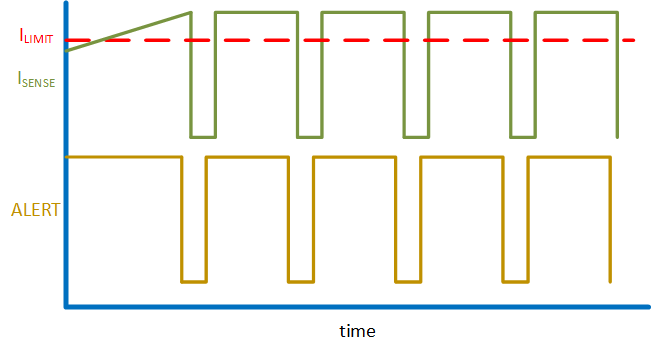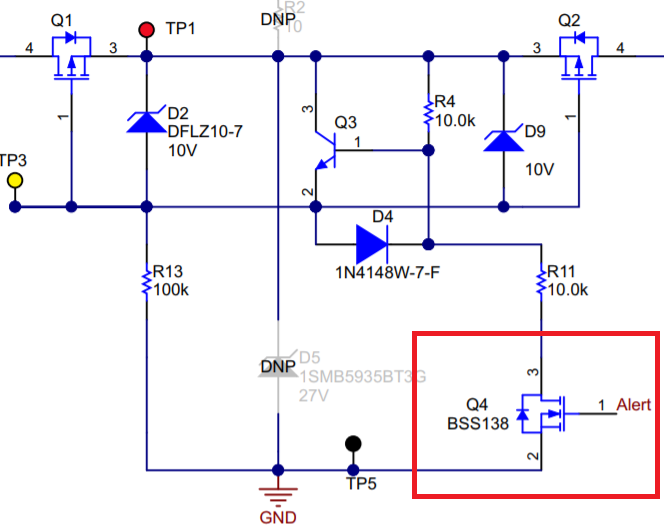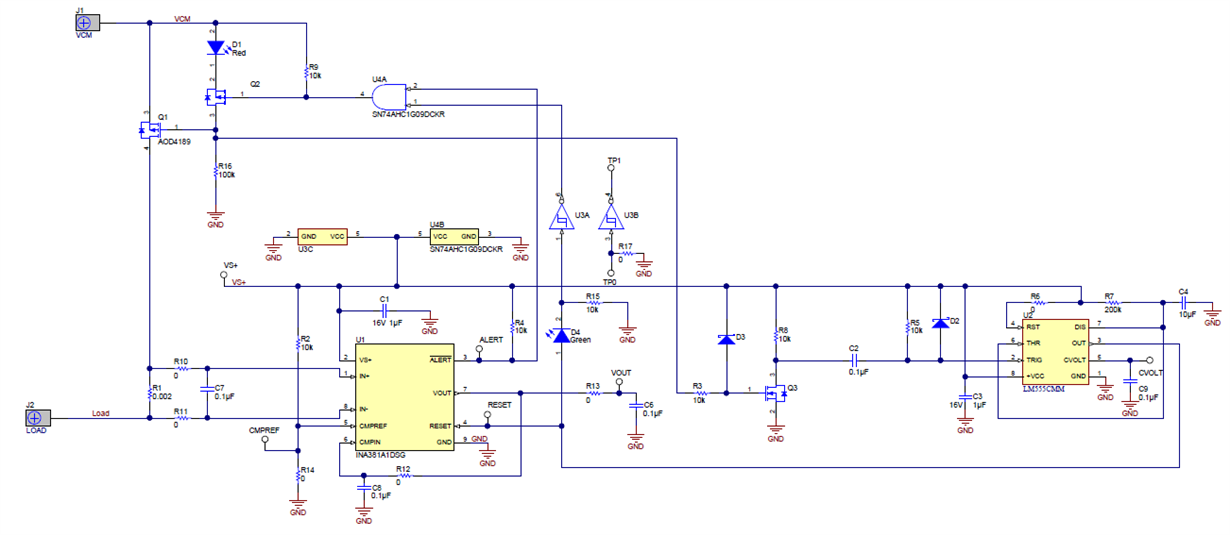Other Parts Discussed in Thread: INA300, INA381, LM555, INA206, INA207, INA204, INA205, INA203, INA208, TIDA-00795
Hello,
I am using current sensing IC INA300-Q1 for overcurrent sensing for 2A limit. if I checked this IC independently, it works, it goes low after 2A current sensed. i have added switch and control circuit before load. that time the alert signal does not go low, it remains on, please look into this issue and suggest any solution. I have attached schematic herewith.


